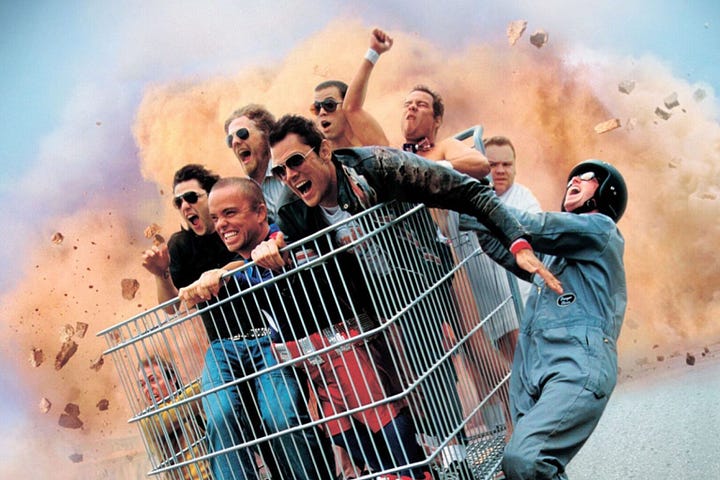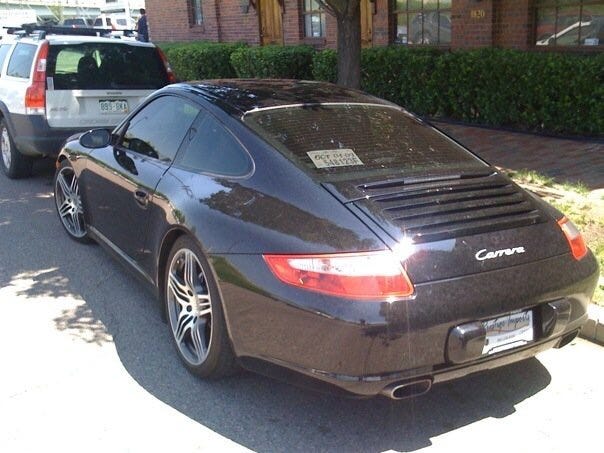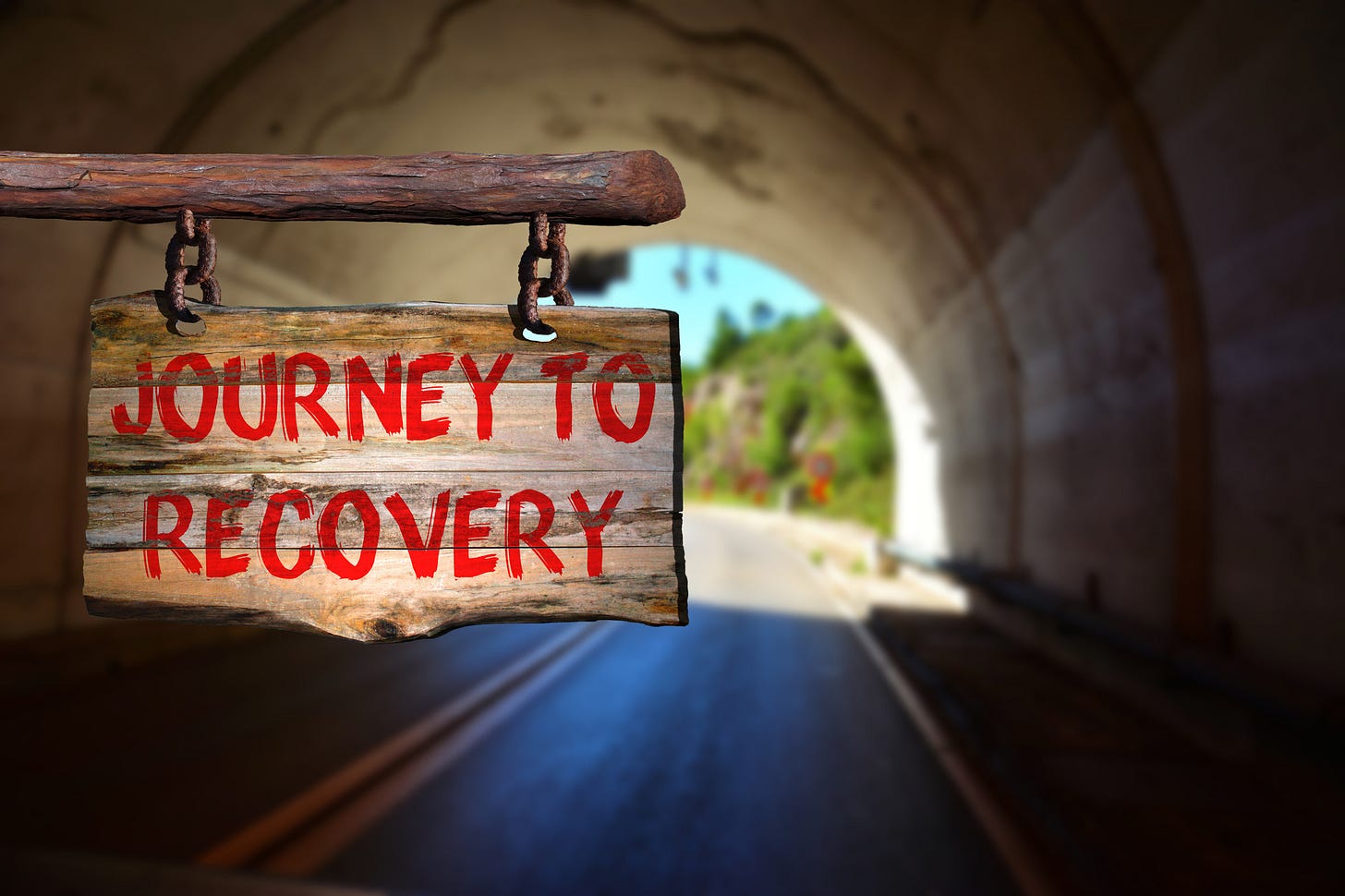Acute: adjective. Definition: Extremely sharp or severe. Intense.
Insidious: adjective. Definition: working or spreading harmfully in a subtle or stealthy manner.


Jackass was an extremely successful media property. Launched in 2000 on MTV Network, it ran for three short seasons. The show, starring Johnny Knoxville and a cast of knuckleheads willing to do wild and dangerous stunts on camera, spawned several successful spinoffs, a video game series, and nine feature films. It is a significant part of American culture in the 2000s. Was Jackass a fearless show or a reckless show? Proponents claim that the show featured regular disclaimers and warnings noting that the stunts were performed by willing participants who were on payroll, and that these stunts should not be recreated by others. Critics said that the show was responsible for countless deaths and injuries involving teens and children recreating the stunts on their own. In the mind of Connecticut Senator Joe Lieberman, the show was clearly reckless. His relentless pressure on Viacom, the parent company of MTV, led to reruns being dropped and the show eventually being canceled. Multiple lawsuits were filed against Viacom, and against individual show performers, for claims of bodily injury.
Does the difference between fearless and reckless reside in the level of control over the outcome? Does it matter how severe the potential outcome is? Does the training and preparation of the participants mitigate the risk? Does it change the equation if you involve or affect others with your behavior? You be the judge. Here are some scenarios that I’ve witnessed or lived through in my life that can be representative.
I once owned a Porsche 911. It was a nearly new 2007 black coupe with 20-inch wheels, blacked out windows, and an all-black interior. I wrote a hot check for it one day after the closing of the sale of my company in 2009 (the money was coming…it just wasn’t there just yet). I had always wanted one. For whatever reason, with all of the potential choices I could afford at the time, the 911 represented my childhood imagination and fantasy with the ultimate speed machine. I had mixed images of the cartoon character Speed Racer, the actor Steve McQueen, images from the many Road and Track magazines I’d pored over in my youth, and actual driving experience with an earlier model 911 that my college roommate Andy had owned.
Here’s my differentiation of fearless and reckless as it relates to that one car-owning experience. I bought the car on August 2, 2009. My first day checking into Betty Ford in Rancho Mirage, California was November 23, 2009. You do the math. I was a high-functioning and high tolerance drunk with a high-performance sports car the time in between. There were many close calls. Learning to drive the car very quickly, while also managing to stay at only double the legal limit for a breathalyzer. Only God knows why I was spared. There was more than one occasion when I outran a Denver police cruiser through a neighborhood to elude capture. That, my friends, would definitely qualify as reckless behavior.
Fast forward 6 months. I’m driving across the desert of southern California to a national sales meeting with my new corporate masters in Las Vegas. I crest a hill and see only a ribbon of 2-lane road stretched out before me across the desert. “Let’s see what this baby can do.” It’s 10 am and there isn’t another car within miles. Certainly, there are coyotes and roadrunners and bunnies and whatever other desert creatures that could find their way across my road. But it’s on. I flatten the accelerator pedal, hold the wheel loosely in my fingers, and listen as the 3.8-liter, rear-mounted horizontally opposed 6-cylinder engine roars to dig into its 355-horsepower output. It takes mere seconds and I’m covering asphalt at over 165 miles per hour. Top end on that car was supposed to be 180 but I never made it. Adrenaline surging and my armpits wet, I backed off and resumed my normal pace of 90. It felt like a crawl. Fearless or reckless? I was sober, alone in every way that you can be, and qualified.
I also ride a motorcycle. In past essays here on my Stack, there were examples of my riding that represented both fearless and reckless behavior. Riding with a buzz. Riding without a helmet. Riding at night with a buzz without a helmet. Reckless. My time on motorcycles these days still requires a measure of fearlessness, but without the recklessness.
Fearless is BASE jumping. Reckless is doing it without the proper equipment or landing area, or in weather conditions that don’t support it. Fearless is big wave surfing. Reckless is doing it alone. All of these examples carry acute short-term risk. Relatively easy to understand the consequences of failure if you initially do the thing without a proper risk/reward assessment, or if you continue to do the thing even when that RR equation is completely out of line. You know for sure that one potential outcome is “splat.”
More complicated by a long measure is the differentiation between fearless and reckless as it relates to longer-term self-destructive behavior. The risks may not be as acute. The reward may be immediate. But the consequences may be insidious and long-lasting. There is a whole list of typical human lifestyle behaviors that qualify for examination. How about food consumption and the way we eat? How about drinking? Smoking? Recreational drugs? Exercise or the lack thereof?
It may be simpler to list the seven deadly sins of pride, greed, wrath, envy, lust, gluttony, and sloth. But let’s be real about this. Human beings are after all…well…human beings. Religions exist because of sin. If it wasn’t for the first two; pride and greed, we wouldn’t have corporate CEOs, billionaires, or politicians. Without wrath, we’d have no war. Without envy or lust, we’d have no sex industry and there’d be no Hollywood. Without gluttony or sloth…well you know the answer to that one. No big food, no big pharma, and no healthcare (sick care) system. Without the seven deadly sins, we might not need a single practicing attorney. Behavior that could accurately be termed shameless abounds in our society. All one has to do is review any social media feed.
This ain’t Sunday school, so let’s back slowly away from the seven deadlies…slowly now…with our heads slightly bowed. As a reminder, our focus is fearless, reckless, or shameless as it relates to risky behavior.
How about we first digest the topic of food? Pretty universal, right? We all gotta eat. There’s no question that the behavior of most Americans as it relates to food is abhorrent. The American Medical Association, the CDC, the World Health Organization, and nearly every other major medical or health association calls for changes in how we consume food. Obesity is a chronic, serious, and extremely common disease in our society. Like many diseases that we suffer from in America, much of it is brought about by our relationship with the food we eat. We’ve known for decades that obesity, type II diabetes, cardiovascular disease, and many forms of mental illness are direct outcomes of food behavior. Again…we’re focused in this essay on behavior. There is an argument to be made that we’ve been lied to so relentlessly about how we should eat for so long…but that’s another essay for another day. Given our current knowledge, it’s clear that our behavior can be diagnosed as reckless.
When we soberly examine the risk/reward of a short-term activity that may have an acute negative outcome, and we prepare to go ahead and do it, that’s fearless. When the behavior is more chronic and insidious, and we do it anyway, despite the knowledge of the potential outcomes in the longer term, that’s reckless. But why?
Smoking, drinking, drug use, eating, gambling, sex, social media overuse, victimhood…the list goes on and on. Each of these behaviors can be managed by some people in a short-term or occasional manner. Some. People. If we focus on the behavior surrounding these “habits” it becomes clearer that it is based on an unhealthy relationship with the thing. Step 1 of Alcoholics Anonymous (and many other 12-step based programs) is “We admitted that we were powerless over alcohol—that our lives had become unmanageable.” Examining that step 1 statement you find two parts. The first part is about the behavior itself. “Yup…when it comes to that stuff or that thing…I’m powerless to avoid it or control it.” The second part is more about the outcomes that come as a result of that behavior. “My life, my health, my relationships, my finances, my job…all suck because of this behavior that I’m powerless to stop or manage.” Reckless.
Chronic, uncontrollable behavior that started for whatever reason, and is now detrimental to your life, is reckless by definition. The shameless part of it is more insidious. Remember, guilt is feeling bad about what you did. Shame is feeling bad about who you are. Shameful behavior and shameless behavior are often regarded as synonymous, but they are not. If you’re involved in behavior that others might consider to be offensive or immoral, others around you might think or say, “shame on you,” or “you should be ashamed of yourself.” They are putting that shame upon you. In fact, much research around shame indicates that it is instilled in us by our caregivers at a young age. Where it gets tricky is when you look at shameless behavior as more of a coping mechanism, a denial, or even a cover-up, of one’s own shame or shameful behavior. “I’m going to behave so recklessly that you won’t even believe what I just did. In fact, you might be impressed.” The individual is too well-defended or too scared to confront their own shame around their behavior. Pathological narcissism is very similar. We have many high-profile examples of this in our culture. People who harbor deep feelings of unworthiness or self-doubt, yet nonetheless act with rampant arrogance and a sense of entitlement.
So, as it relates to addictive behaviors around food, alcohol, drugs, sex, gambling, social media overuse, etc. the reckless behavior turns into, or can also be outwardly shameless. There isn’t a single person who struggles with addiction who doesn’t feel shame about their behavior. When I was “in my cups” there was nothing you could say to me that would add to the shame I already felt. My reaction, once I was well on my way to another day or another night of the same was often “fuck it…this is who I am.” The “fuck-its” are a core part of shameless behavior and thus a core part of the shame carried around the behavior.
So why do 12-step programs work? Why does recovery work? Why is it infinitely better to be sober? Because reckless and shameless are solved by fearless. Read that once more. We’re back to the beginning. Where perhaps we were once young and fearless and willing to try anything, we had become chronic and therefore reckless. The solution is fearlessness once again. When you get sober, two primary things happen. You abstain physically and separate physiologically from your substance of choice. Separation creates clarity. Then you begin to examine the underlying reasons why the behavior had become so reckless and chronic. Fearless moral inventory is one of those ways. What is it in me that led me to need that kind of self-medication? How have I wronged others? How can I make it right? Ultimately how have I wronged myself, my health, my spirit, my curiosity, my sense of humor, my pursuit of happiness? How can I make it right?
Many of us who have gone through such a transformation feel very strongly about this fact: every single human; addict or not, could benefit from a program of self-examination and recovery. At the beginning, you saw definitions of “acute” and of “insidious.” The benefits of doing this for yourself are both. The acute benefits are really more physically obvious. People look better, feel better, lose weight, gain back mobility, get their jobs back, spouses back, etc. The insidious benefits are more powerful and long-lasting. The way I think about things is now different. The way I interact with others is now different. My choices are better. My emotions are accessible. My relationships are better. I’m more humble, honest, approachable, and loving. Those changes evolve over time and continue to evolve and improve, as long as I’m continually fearless about my program of self-examination.
Be fearless.





